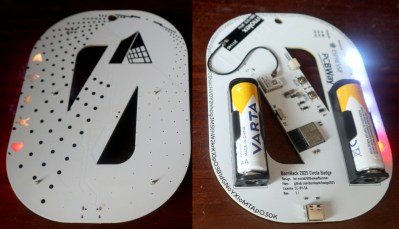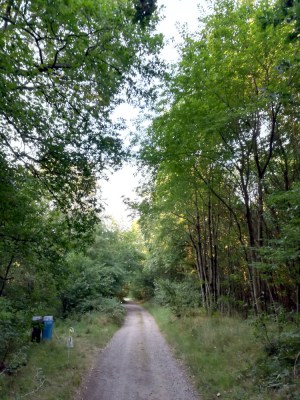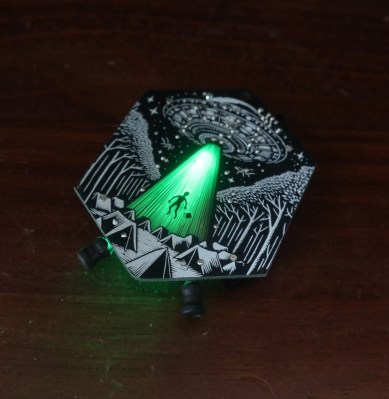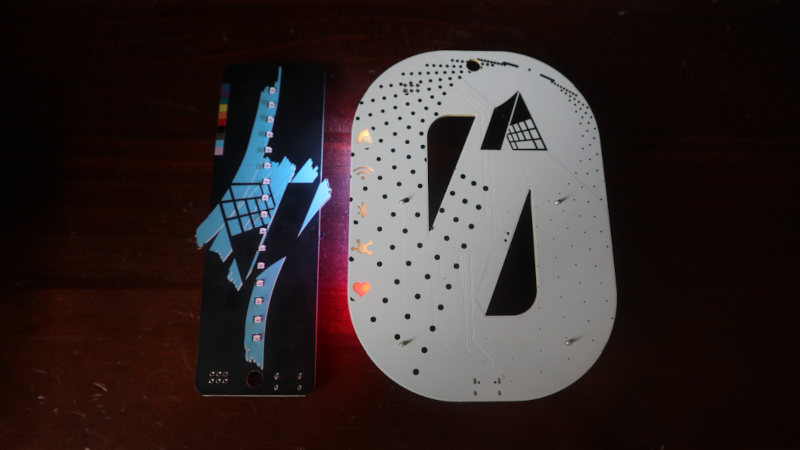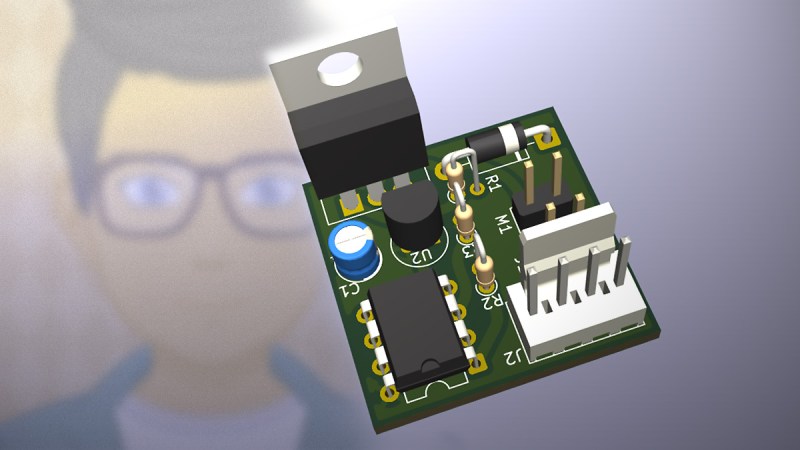Two For The Price Of One: BornHack 2024 And 2025 Badges
BornHack is a week-long summer hacker camp in a forest on the Danish island of Fyn, that consistently delivers a very pleasant experience for those prepared to make the journey. This year’s version was the tenth iteration of the camp and it finished a week ago, and having returned exhausted and dried my camping gear after a Biblical rainstorm on the last day, it’s time to take a look at the badges. In case you are surprised by the plural, indeed, this event had not one badge but two. Last year’s badge suffered some logistical issues and arrived too late for the camp, so as a special treat it was there alongside the 2025 badge for holders of BornHack 2024 tickets. So without further ado, it’s time to open the pack for Hackaday and see what fun awaits us.
Two Very Elegant Badges
Best photographed with the badge turned off, the BornHack 2024 badge’s LEDs are BRIGHT!
Both badges are the work of [Thomas Flummer], someone who has appeared here more than once over the years with an array of beautifully designed badges and SAOs. First out is the 2024 one, and it’s a slim rectangular board around 140 by 45 mm with a row of addressable LEDs and a BornHack logo on the front, and the electronics and LiPo battery on the rear. It’s elegant in its simplicity, with an ESP32-C3 Mini module, battery charger and power supply circuit, and an NT3H2x11 addressable NFC chip and associated antenna. There are also the usual SAO and QWiC connectors flus some GPIO pads for expandability.
The LEDs on the front can display pretty colours of course, but their intended use is for persistence-of-vision displays. On its GitHub repository are several firmwares should you wish to play around with this. Meanwhile the NFC chip is interesting in itself, as it’s both a passive tag that can be read when the badge is turned off, and a tag that can be addressed by the ESP32. It was intended for an NFC game at BornHack 2024, but it remains a part worth investigating.
The Molex antenna on the 2025 badge sticks over the PCB antenna, which isn’t ideal, but seemed to work.
Having given some attention to the 2024 badge it’s time to pick up the 2025 model, which is a large white PCB in the shape of an Ø character. On the front is a BornHack logo and a row of backlit status icons on the left hand side, while on the back you’ll find the electronics and a pair of AA batteries. It’s a LoRa experimentation board, so alongside another ESP32-C3 Mini there’s a European 868 MHz LoRa Module. There’s a PCB antenna on the board but this module has one of those tiny co-axial connectors and was supplied with a Molex stick-on antenna. Full design details can be found in its GitHub repository.
A Real World LoRa Propagation Test
BornHack: Very lovely, but not the best landscape for radio.
Out-of-the-box, this badge came with a Meshtastic node firmware, which for a hacker camp badge worked very well indeed. It’s easy enough to connect to the Meshtastic app on your smartphone, and soon a plethora of nodes sprang up. Most of you will be familiar with Meshtastic networks so it’s not worth going into too much detail on that front, but the site offered an interesting opportunity to test both those Molex antennas, and 868 MHz propagation in a real-world setting.
The BornHack site is not the least challenging location from a UHF radio perspective, being a series of former gravel pits interspersed with dense forest over a large area. Thus instead of line-of-sight it offers earth banks and dense foliage, neither ideal for radio propagation. I tested it by going to the far corners of the site and sending messages to my friends, and I was pleased to find I could cover the whole terrain with no more than a single intermediate badge providing a relay. This is as much to do with the clever tech behind LoRa as it is the Molex antennas, but I was still pleasantly surprised that they worked that well. In use it makes far more sense to take power from a USB-C source than those batteries, and I fond it didn’t appreciably accelerate my phone’s power drain.
The alien abduction artwork on the EMF Explorer makes for great backlighting.
So at the camp with two badges there was plenty to do with both of them, and it’s pleasing to see a design very much focused around life after the camp. I particularly like the “10” they form together as a reference to the tenth BornHack. The 2024 badge provides a fun light show and a chance to experiment with an interesting NFC chip, while there’s every chance you’ll encounter one of the 2025 badges providing Meshtastic service in a European hackerspace over the next few years, or being carried around as a personal node.
The two official badges weren’t entirely the end of the badge story for me at BornHack, because along the way I also picked up a sporklogic.com EMF Explorer badge from its creator [Darcy Neal]. It’s an analogue circuit for listening to ambient electric fields in glorious stereo which is enough fun, but the party piece is the UFO design backlit by a green LED. One of the most effective uses of unclad PCB I have seen on a badge.
hackaday.com/2025/08/01/two-fo…

